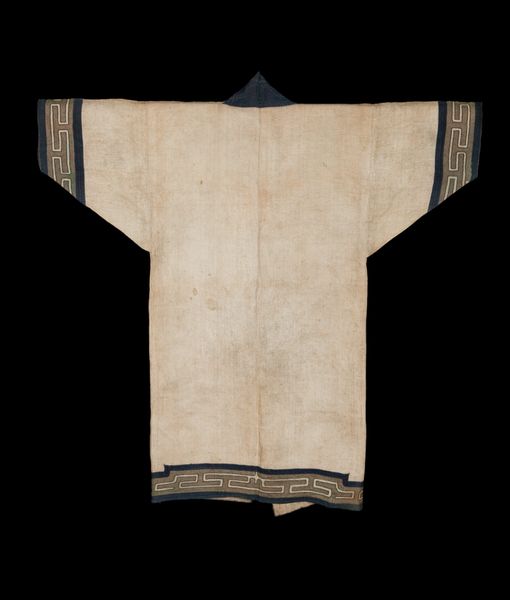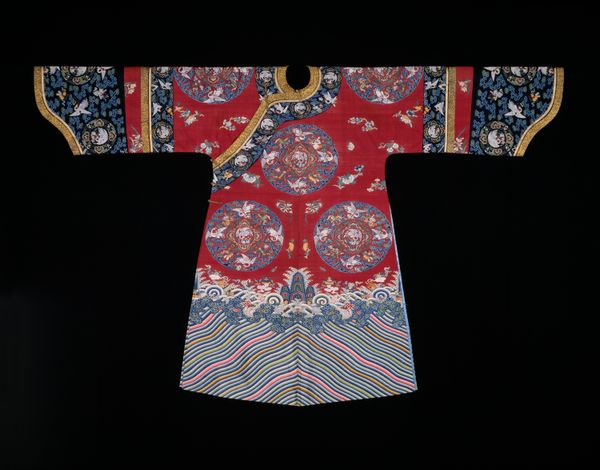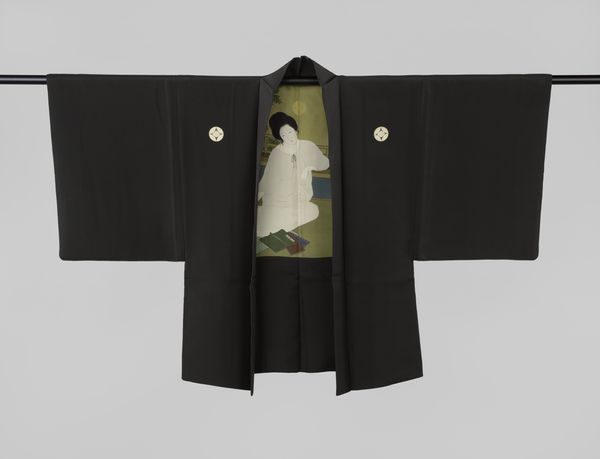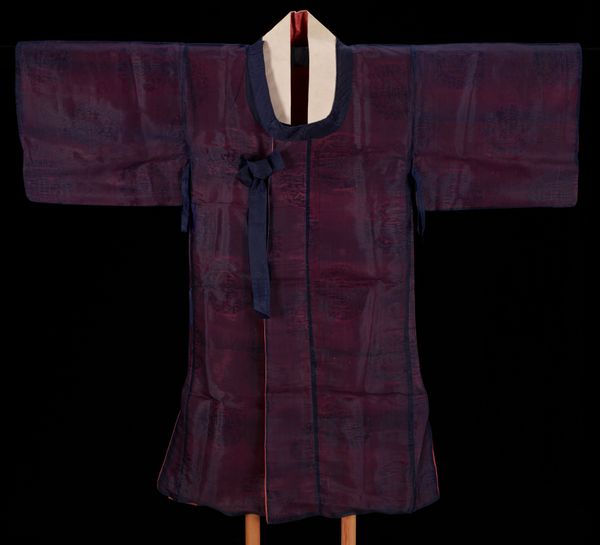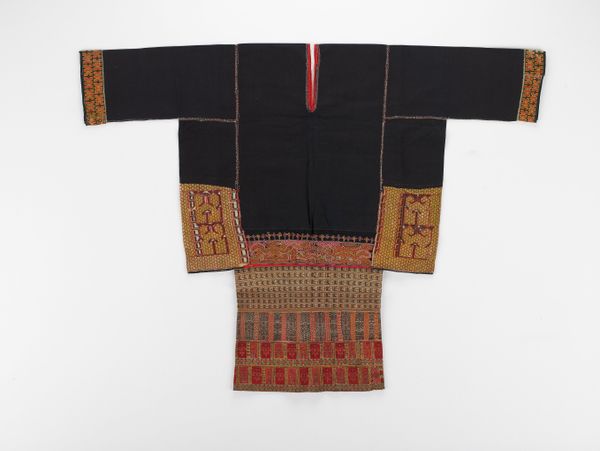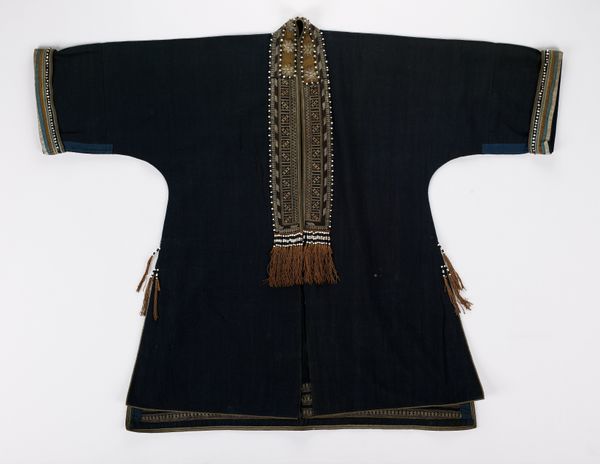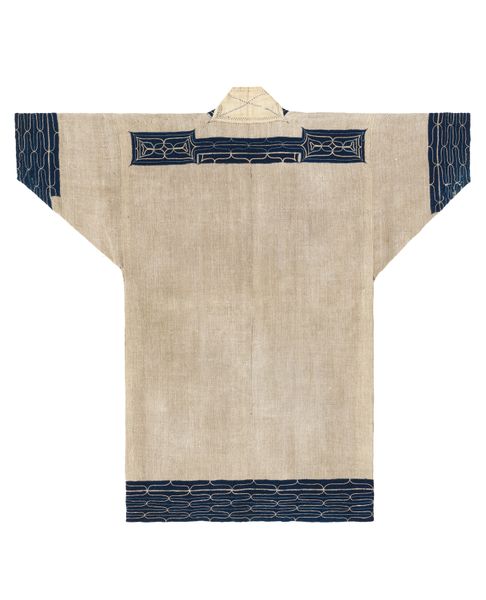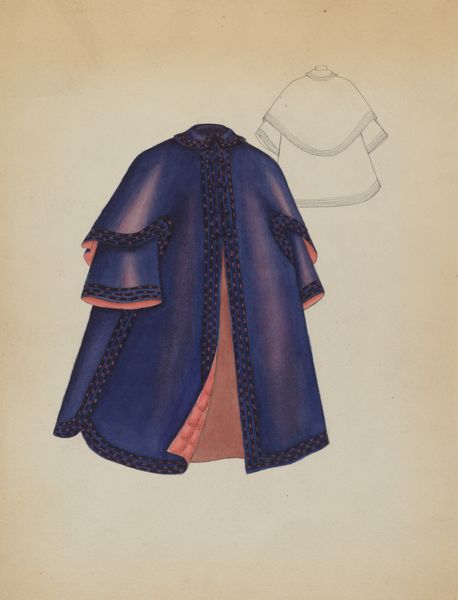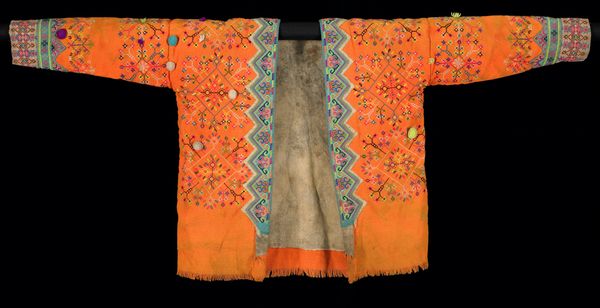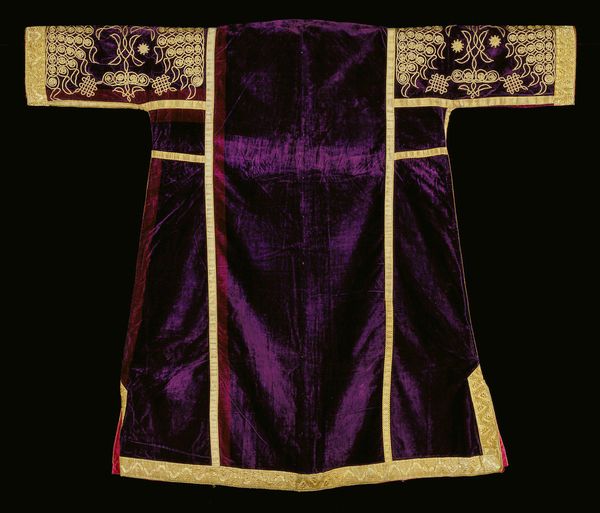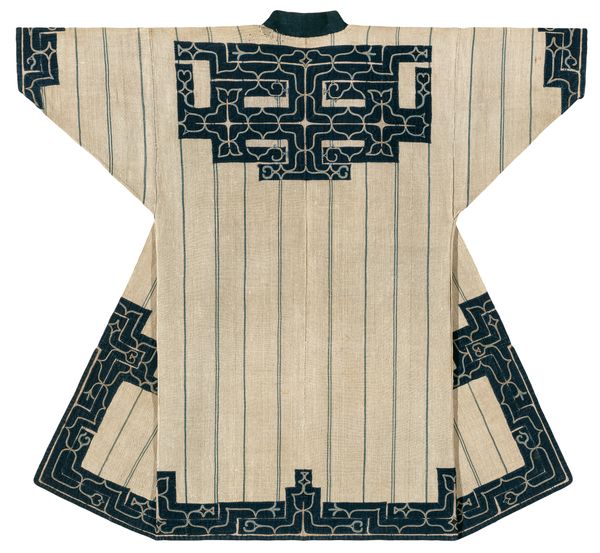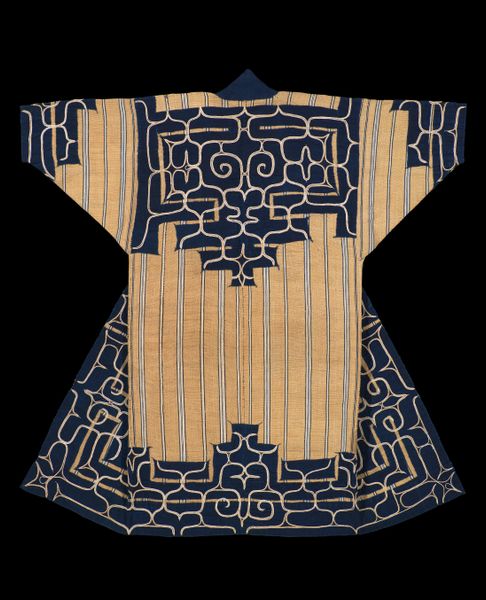
mixed-media, collage, textile, wool, cotton
#
portrait
#
mixed-media
#
collage
#
asian-art
#
textile
#
wool
#
historical fashion
#
cotton
Dimensions: 38 3/4 x 53 1/2 in. (98.43 x 135.89 cm)
Copyright: Public Domain
Curator: Standing before us is a fascinating example of late 19th-century material culture: an army tunic, circa 1890, now residing here at the Minneapolis Institute of Art. Editor: My immediate impression is its geometry, the surprising patchwork construction. It almost feels…deconstructed, in a way that predates modern fashion sensibilities. The colors too; a muted palette that speaks of both function and subdued formality. Curator: The beauty, I think, lies in its materiality. Notice the mixed media – wool and cotton primarily, fashioned into what we might call a textile collage. The construction suggests a repurposing of materials, a piecing together that reflects a resourceful, perhaps even a localized, mode of production. Editor: Indeed, that patchwork tells a story. It invites us to think about the labor involved, who was making these garments, and under what conditions. Was it factory-produced, or more likely, assembled by women in a community setting? It pushes us to consider the intersection of identity and production – the class, race, and gender dynamics implicit in military garment construction of that era. Curator: Absolutely. Look closer, and you can see evidence of hand-stitching. The embroidered detailing on the pocket area hints at an attempt to individualize an otherwise utilitarian garment. And what about the original wearers? What were their experiences? Editor: I’m compelled to consider how military uniforms serve as both identifiers and suppressors of individuality. How did this tunic contribute to shaping identity, perhaps masking individual narratives under a banner of military discipline, even as slight variations emerged during the process of making and adornment? And, how did the garment itself age and change? The wear and tear is part of its truth, it hints at narratives beyond formal records. Curator: Considering the interplay of its materials – the humble cotton and sturdy wool - it’s remarkable how this garment acts as both a historical artifact and an artistic object, simultaneously. This single piece embodies function and a striking visual composition that invites contemplation. Editor: Ultimately, viewing this tunic moves me to ponder the untold stories woven into every fiber. Not just of the wearer, but of those whose hands fashioned it and contributed to the larger tapestry of 19th-century society, labor, and the often-hidden costs of empire-building. It whispers questions, inviting our critical engagement with fashion as more than surface appearance.
Comments
minneapolisinstituteofart almost 2 years ago
⋮
It looks as though it were designed for Diaghilev’s Ballets Russes in Paris in the 1910s, the colorful patches of felted wool giving this tunic a “modernist” look. Yet it’s part of a soldier’s uniform from Sudan, where Muslim leaders successfully fought against the colonial government at the end of the 19th century. The religious Mahdi army wore patches on their uniforms as a reference to the ragged clothes of mystic dervishes, a show of contempt for worldly goods.
Join the conversation
Join millions of artists and users on Artera today and experience the ultimate creative platform.
